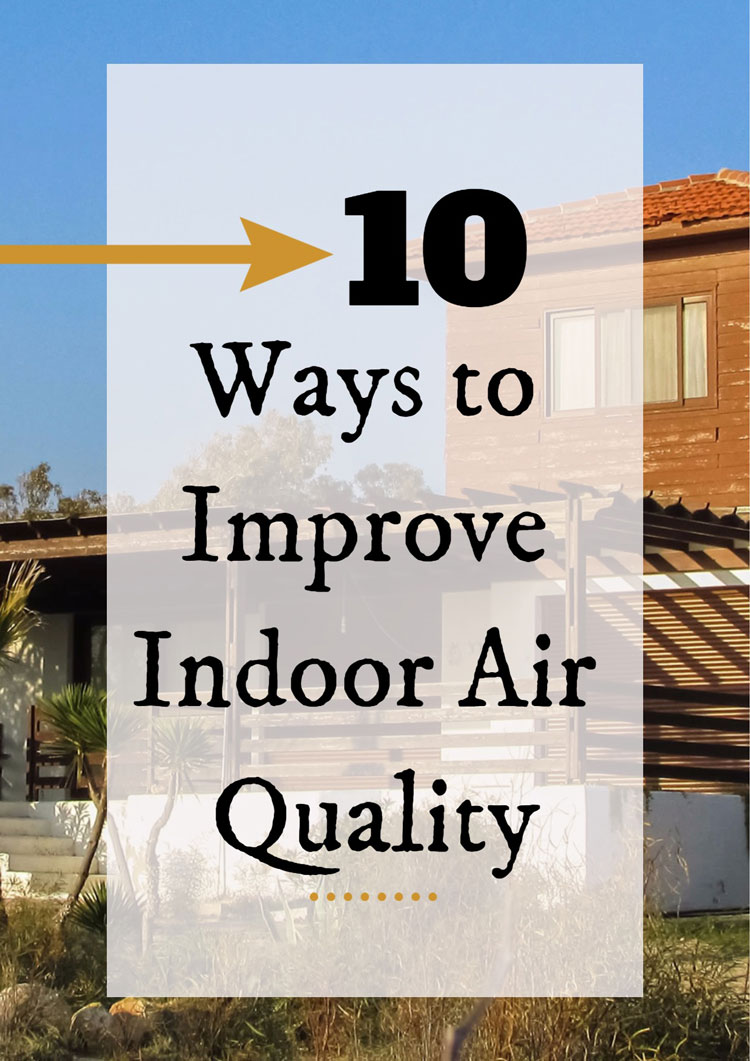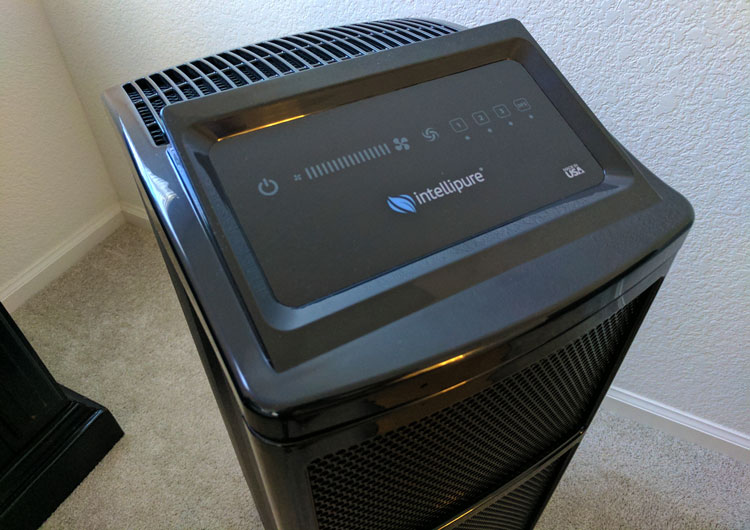I was provided an air purification system to review to help improve my indoor air quality. 
Many of us spend most of our time indoors. We work indoors, we live indoors and we sleep indoors. Therefore common indoor pollutants including excessive moisture, volatile organic compounds (VOCs), combustion products, radon, pesticides, dust particles, viruses, and bacteria can have a big impact on our health.
Air quality is very important and something you should consider improving for your overall well-being. But how can you improve air quality indoors? Often people assume opening a window will do the trick. Others think air fresheners and candles since they can briefly improve odor. When actually, those things can have the opposite effect!
If your home has odors, dampness, stale air, pollutants, or stuffiness here is what you can do to improve your air quality!
10 Ways to Improve Indoor Air Quality
1. Use safe household cleaners and products.
Household cleaners are filled with toxins! Have you ever read the label and what it says if swallowed? I decided a few years ago to rid my home of those toxic cleaners. If they could do that much harm to me, I didn’t want them all over my counter tops, walls and baseboards! I have since switched to vinegar (works for everything!) and natural cleaners.
2. Use safe paint and safe home remodel materials.
If you paint your home or are doing any kind of remodel, the chemicals of the building products can wreck havoc on air quality! Choose low volatile organic compounds (VOC) paints, building materials and furnishings for your home. These will emit less pollutants and keep breathing the air safer.
3. Don’t smoke indoors.
Smoking is one of the worst things for your health and for indoor air quality. Smoking emits harmful gases and particles that imbed into fabrics, furnishings and even the walls. Smoking is terrible for air quality and sticks around a lot longer than just the length of the one cigarette.
4. Wash bedding frequently.
Our bed sheets are filled with microscopic dust mites, skin flakes and dirt. Washing your bedding in very hot water once a week will kill mites and germs which add to the bad air pollution in your bedroom. (Especially helpful if you don’t shower before bedtime.)
5. Don’t wear shoes in the house.
Shoes carry in dust, mold, pollen, dirt and more into every inch of our home if they are worn indoors. Our floors are already great at accumulating dust, chemicals, allergens and particles. Reduce the amount of dirt and air pollutants coming inside by having a no shoes in the house policy!
6. Clean your fabrics regularly.
Similar to bedding, fabrics around your home collect dust mites, allergens and other particles. Wash your fabrics like drapes, couch pillow covers, blankets, and cushion covers regularly to reduce particles that add to poor air quality. The hotter the water, the better!
7. Use clean air plants.
Adding plants to your home not only make your home look more beautiful, but it also can double as a natural air filter. There are many plants that rid you home of pollutants. Houseplants can not only filter the air, but they can also absorb air toxins like benzene, formaldehyde, and trichloroethylene. Plants that improve air quality include small palm trees, peace lily, pot mum, weeping fig, aloe vera, golden pothos, spider plants, Chinese evergreens, English ivy and Gerber daisies.
8. Control the moisture.
Humidity levels can cause a number of problems whether or not humidity is too high or too low. High humidity can breed mold, mildew and bacteria – plus dust mites love moisture! Yet, too low of humidity can dry out our skin. Ideally, indoor humidity should be between 30 -60%. To get the proper humidity level you can either use a humidifier or dehumidifier.
9. Clean your air conditioner and heating systems.
When you regularly clean your vents and change out your filters in your furnace and air conditioning unit, you are reducing the dust particles. Personally, we have tested out changing our filters every month with cheapo filters and then also changing them out every three months with high-quality filters. We decided that the high-quality filters are very expensive for good reason. An easy way to remember to change out your filters is to set an email reminder to repeat every few months!
10. Use an air purifier.
Home air purification systems can filter out toxic particles, odors and pollutants. They can help provide cleaner air, meaning less chances of common colds and allergies. But before you buy just any air purifier, you should make sure you get all the details. There are a number of air purifiers on the market today, but they are not all the same.
I have been using the Intellipure Ultrafine 468 air purifier in my home for the past four months. I have SO many good things to say about this air purifier. While I can’t physically see the harmful particles being filtered, I can tell the air is fresher! I know, that sounds crazy! I didn’t think I would notice the difference in air quality. I thought it would be one of those things that you hoped it was working, but there is no way to tell.
Well, I can tell the difference! In fact, when we went away for a week for Spring Break, I felt more stuffed up and the air felt stuffy to me. When I got back home, the air felt fresh, crisp and clean! The biggest thing I notice is that I am less stuffed up in the mornings when I run the air purifier at night.
This air purifier has a efficiency rating of 99.99% and is the only air purifier on the market to combat all three pollutant categories – micro-organisms, volatile organic compounds (VOCs) and particles. It is super quiet and has a light mode for sleep. I could go on and on about this air purifier, but I am going to save that for a whole other post. If you are looking into cleaning indoor air, I suggest trying these tips and looking into the Intellipure Air purifier. My indoor air quality has improved greatly!
